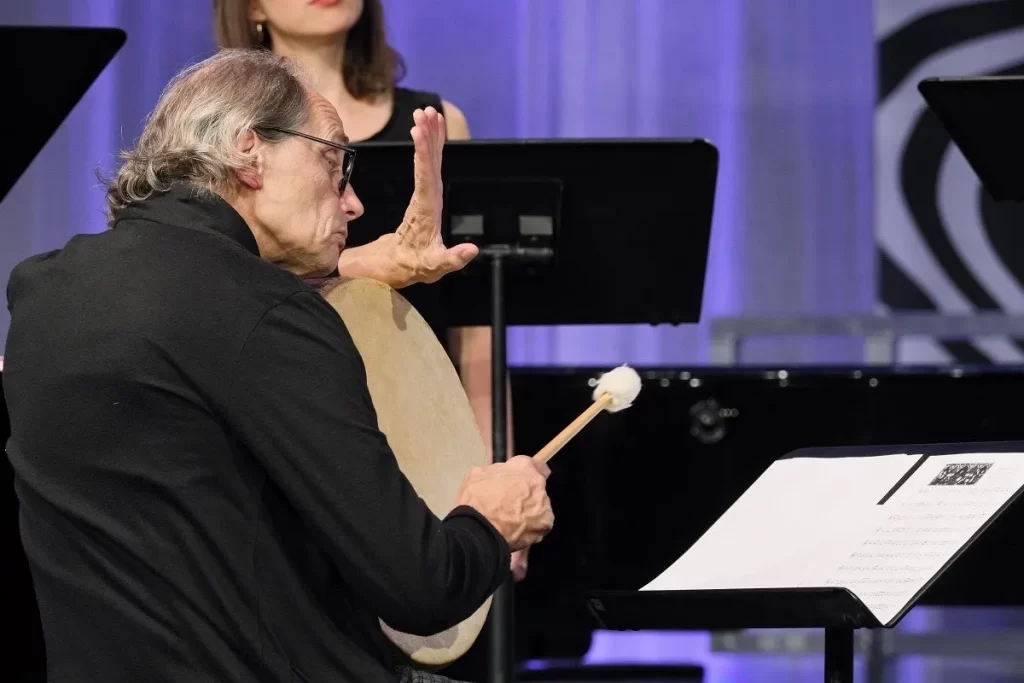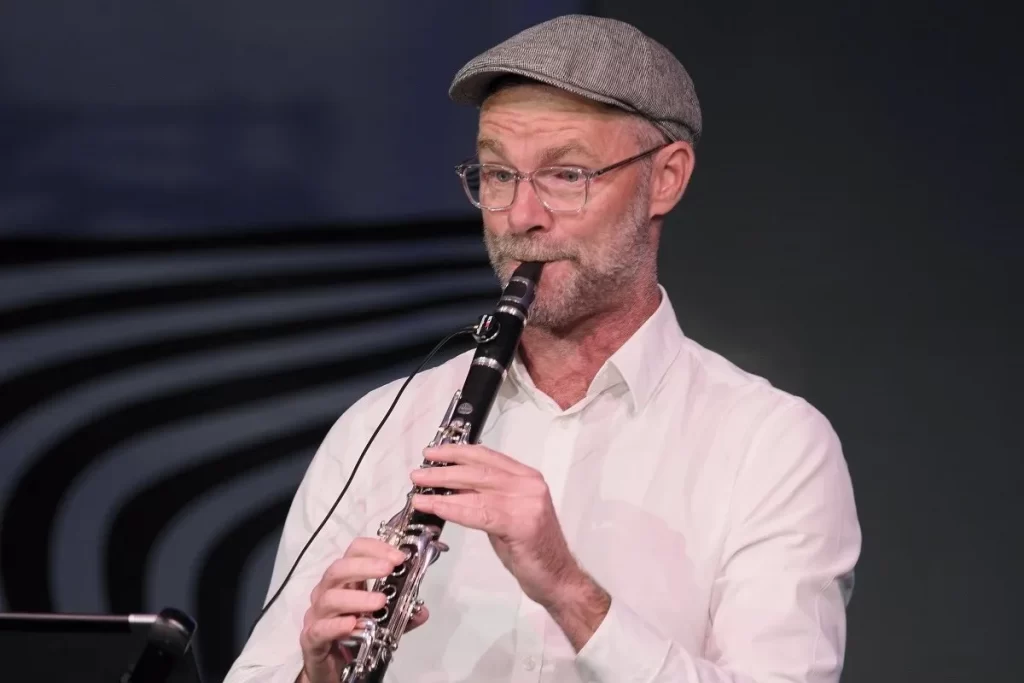SPANISH medieval music to a masterpiece of post-Stalin Soviet optimism and on to ’80s New York minimalism, this Canberra International Music Festival concert had a bit of everything.

The singers and players for “The Great Divide”, were Luminescence Chamber Singers, Orava String Quartet and Jason Noble, clarinet.
The first part comprised nine pieces of music from three early composers, Alfonso X el Sabio, (1221-1284), Dom Pedro de Cristo, (1545-1618) and Manuel Cardoso, (1566-1650).
With the CIMF artistic director Roland Peelman conducting and on percussion, the first piece began with chanting behind a vocal line that immediately took a listener back to another time and space. With just three female and three male singers, the perfectly rounded sound of this small group sat firmly in the ear.
Sitting down to conduct, Peelman alternated between leading with his direction and percussion. This music of long ago, full of warmth and a soft touch, made a distinct impression on the senses. It floated through the air, creating a gentle and peaceful ambience. The ancient sounds transfixed the audience. After applauding for the first two works, they went silent and let the glorious music overtake them.
One piece, which included tambourine, clapping, finger-snapping and with Peelman on percussion, boosted the atmosphere and the beat. That got the audience applauding.
Ending with literally a foot-stomping piece, it had the singers smiling broadly and the audience tapping along. This was an exceptional first half of music that enthralled.

After the interval, Steve Reich’s “New York Counterpoint”, for clarinet, which was performed by Jason Noble also had a backing recording of multiple clarinets.
Mesmerising, oscillating, moving in and out, the music twisted. With the sounds of so many clarinets, but with only one performed live, it was at times difficult to make out which was live, and which was recorded. If it wasn’t for Noble’s body movement, it may have been impossible to distinguish the live music. Minimalism captivates or repulses. Whatever, catchy music like this is always entertaining. It sends a listener into a sound envelope that can spellbind.

The final work defied a musical connection – the “String Quartet No. 6”, by Dimitri Shostakovich, played by the Orava Quartet.
The pensive and probing sound that fills the opening allegretto is never at rest with itself. As the tension built a theme emerged, but not for long. The introspective probing came back and then slid away.
Orava is a well-formed group that has an expressive sound, but it still has a way to go in stage presence. While not passive, a more individual approach to its performance would see the quartet that touch of colour that is in its music.
The introspective atmosphere that this music creates does not let up. In the lento third movement, a pragmatic sadness oozed from every instrument as they slowly followed one another in and out. And it is such beautiful writing; it created a highly personal sound. The quartet has a strong final movement. It opens wide, it becomes grand, and the playing matches its sound quality.
In such a diverse concert that crossed centuries and countries, the Great Divide was in the styles, but not in the quality of the music.
Article was written by Rob Kennedy from Canberra City News.
